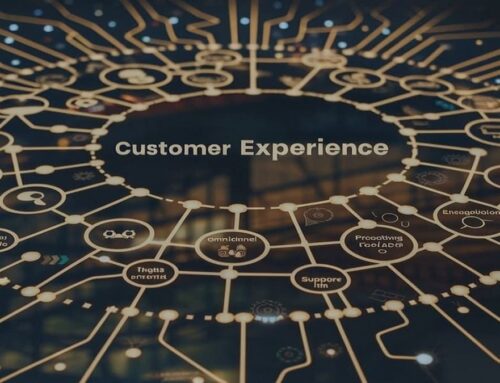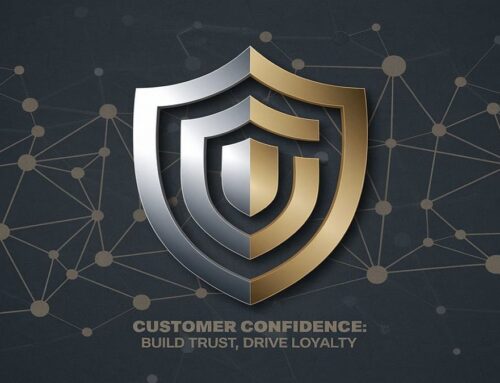
Customer Journeys
In today’s fast-paced world, customer expectations are higher than ever. A single positive experience can turn a one-time shopper into a lifelong fan, while a bad one can send them running to your competitors. The secret sauce? Delivering an unforgettable customer journey. But what does that really mean? And how can you achieve it consistently?
Let’s dive into the essentials of experience excellence and explore how to craft customer journeys that leave a lasting impact.
What is a Customer Journey?
A customer journey is the complete sum of experiences that a customer goes through when interacting with your brand. It’s not just a single touchpoint, like making a purchase or contacting customer support. Instead, it’s the entire experience – from the first time they hear about your company to their ongoing relationship with you.
Think of it as a roadmap. Each stop along the way, be it a website visit, a social media interaction or a product unboxing, contributes to the overall journey. The goal? To ensure every stop is smooth, enjoyable and memorable.
Why Customer Experience Matters
So, why should you care about the customer journey? Simple. In a world where consumers have endless choices, experience is often the deciding factor. Research shows that customers are willing to pay more for a better experience. They’re also more likely to stay loyal to brands that consistently deliver.
But it’s not just about retention. Positive experiences lead to positive word-of-mouth, which can be your most powerful marketing tool. In contrast, one negative experience can spread like wildfire, damaging your reputation.
Mapping the Customer Journey
Before you can enhance the customer journey, you need to understand it. This means mapping out every interaction a customer might have with your brand.
- Identify Touchpoints: List out every possible way a customer could interact with your brand. This could include your website, social media, emails, in-store visits and customer service calls.
- Understand Customer Personas: Who are your customers? What are their needs, wants and pain points? Creating detailed personas will help you see things from their perspective.
- Chart the Journey: From discovery to post-purchase, map out each stage of the journey. What actions do customers take? How do they feel at each stage?
- Identify Pain Points: Where might customers encounter friction or frustration? These are your opportunities for improvement.
- Evaluate Your Touchpoints: Are your touchpoints consistent? Do they reflect your brand’s values? Are they delivering the experience you want?
The Pillars of Experience Excellence
Once you’ve mapped the journey, it’s time to focus on delivering excellence at every step. Here are the key pillars to keep in mind:
-
Personalization
Customers want to feel seen and understood. Personalization means tailoring the experience to individual preferences, behaviors and needs.
- Use Data Wisely: Leverage data to understand your customers better. What do they like? What do they buy? Use this information to personalize offers, recommendations and communications.
- Segment Your Audience: Not all customers are the same. Segment your audience into groups based on similar characteristics and tailor your messaging accordingly.
- Make It Personal: Whether it’s a personalized email or a product recommendation based on past purchases, make the customer feel like the experience was designed just for them.
-
Consistency
Consistency is key to building trust. Customers should have a seamless experience across all touchpoints, whether they’re shopping online or visiting your store.
- Unified Branding: Your brand’s voice, look and feel should be consistent across all platforms. From your website to your social media channels, everything should feel cohesive.
- Cross-Channel Integration: Ensure that your channels are integrated. For example, if a customer starts a purchase on your website, they should be able to finish it on your mobile app without any hassle.
- Reliable Service: Customers expect reliability. If you promise two-day shipping, deliver in two days. If you offer 24/7 customer service, make sure someone’s always there to help.
-
Emotional Connection
An unforgettable journey isn’t just about efficiency, it’s about creating an emotional connection. Customers who feel emotionally connected to a brand are more likely to stay loyal.
- Storytelling: Use storytelling to connect with your customers on a deeper level. Share your brand’s story, values and mission in a way that resonates with your audience.
- Empathy: Show that you understand and care about your customers’ needs. Empathy can go a long way in building emotional connections.
- Surprise and Delight: Sometimes, it’s the little things that make the biggest impact. A handwritten thank-you note, a surprise discount or a personalized recommendation can turn a good experience into a great one.
-
Responsiveness
In today’s world, speed matters. Customers expect quick responses and resolutions.
- Fast Communication: Whether it’s a query on social media or a customer service email, aim to respond as quickly as possible. Customers appreciate timely communication.
- Proactive Service: Don’t wait for customers to come to you with problems. Use data to anticipate issues and address them before they become bigger concerns.
- Feedback Loops: Encourage and listen to customer feedback. This will help you identify areas for improvement and show customers that you value their input.
-
Innovation
Customer expectations are constantly evolving and staying ahead means continuously innovating the customer journey.
- Stay Current: Keep up with industry trends and technologies that can enhance the customer experience. Whether it’s AI-driven chatbots or augmented reality, be open to integrating new tools.
- Experiment: Don’t be afraid to try new things. Test different approaches to see what resonates best with your audience.
- Iterate: Customer experience isn’t a set-it-and-forget-it process. Regularly review and refine your strategies to ensure you’re delivering the best possible experience.
Practical Steps to Delivering Unforgettable Customer Journeys
Now that we’ve covered the pillars of experience excellence, let’s get practical. How can you implement these principles to create unforgettable customer journeys?
-
Start with Onboarding
First impressions matter. A smooth onboarding process sets the tone for the rest of the customer journey.
- Welcome New Customers: Send a warm, personalized welcome message to new customers. This could be an email, a video or even a physical welcome package.
- Educate: Provide new customers with the information they need to get the most out of your product or service. This could be through tutorials, FAQs or a dedicated onboarding specialist.
- Check-In: Follow up with new customers after a week or two to see how they’re doing. This shows that you care about their experience and are there to help if needed.
-
Optimize Your Website
Your website is often the first stop on the customer journey. Make sure it’s a good one.
- User-Friendly Design: Ensure your website is easy to navigate, visually appealing and mobile-friendly. A cluttered or confusing website can turn customers away before they even start.
- Speed Matters: A slow website can be a deal-breaker. Optimize your site for speed to keep customers engaged.
- Clear Calls to Action: Make it easy for customers to take the next step, whether that’s making a purchase, signing up for a newsletter or contacting you for more information.
-
Engage on Social Media
Social media is a powerful tool for connecting with customers and enhancing their journey.
- Be Active: Regularly post content that’s relevant and engaging for your audience. This could be product updates, customer stories or behind-the-scenes looks at your brand.
- Respond Quickly: Monitor your social media channels and respond to customer inquiries or comments promptly.
- Use Social Listening: Pay attention to what customers are saying about your brand on social media. Use this feedback to improve your offerings and address any issues.
-
Invest in Customer Support
Customer support is a critical touchpoint in the customer journey. Great support can turn a negative experience into a positive one.
- Train Your Team: Ensure your customer support team is well-trained, empathetic and equipped to handle a variety of issues.
- Offer Multiple Channels: Provide customers with multiple ways to reach you by phone, email, live chat and social media. Make it easy for them to get the help they need.
- Follow Up: After resolving an issue, follow up with the customer to ensure they’re satisfied. This extra step can make a big difference in how they perceive your brand.
-
Personalize Communications
Personalized communication shows customers that you understand and care about their individual needs.
- Segment Your Emails: Rather than sending the same email to everyone, segment your list based on customer behavior, preferences or demographics.
- Use Their Name: Something as simple as using a customer’s name in an email can make the interaction feel more personal.
- Offer Relevant Content: Tailor your content to the customer’s interests. For example, if they’ve recently purchased a product, send them tips on how to use it or recommendations for related products.
-
Reward Loyalty
Loyal customers are your biggest advocates. Rewarding them can strengthen their connection to your brand.
- Loyalty Programs: Implement a loyalty program that rewards customers for repeat purchases, referrals or other actions that benefit your brand.
- Exclusive Offers: Give loyal customers access to exclusive deals, early product launches or special events.
- Personal Thank-Yous: Show appreciation with personalized thank-you notes or special gifts for long-term customers.
-
Solicit and Act on Feedback
Customer feedback is a goldmine of insights that can help you improve the customer journey.
- Ask for Feedback: Regularly ask customers for their opinions on your products, services and overall experience. This could be through surveys, reviews or direct conversations.
- Act on It: Use the feedback to make tangible improvements. Let customers know that their input has led to positive changes.
- Close the Loop: After addressing feedback, follow up with customers to let them know what actions you’ve taken. This shows that you value their opinion and are committed to improvement.
Challenges in Delivering Experience Excellence
Creating an unforgettable customer journey isn’t without its challenges. Here are a few common obstacles and how to overcome them:
-
Maintaining Consistency Across Channels
With so many ways for customers to interact with your brand, maintaining a consistent experience can be tough.
- Unified Systems: Use integrated systems that allow you to manage customer interactions across all channels. This ensures that everyone on your team has access to the same customer information.
- Clear Guidelines: Establish clear guidelines for how your brand should be represented across different channels. This includes everything from tone of voice to visual elements.
-
Meeting High Expectations
Today’s customers have high expectations. They want personalized, seamless experiences, and they want them now.
- Stay Agile: Be ready to adapt to changing customer needs and expectations. This might mean adjusting your processes, investing in new technology or rethinking your approach to customer service.
- Continuous Improvement: Customer experience isn’t a one-time effort. Regularly review your performance and look for ways to enhance the journey.
-
Managing Customer Data
Personalization requires data, but managing that data responsibly is crucial.
- Data Privacy: Ensure that you’re complying with data privacy regulations and being transparent about how you use customer data.
- Data Management: Use reliable systems to manage and analyze customer data. This will help you personalize experiences without overwhelming your team.
The Future of Customer Experience
The landscape of customer experience is constantly evolving. Here’s a glimpse into what the future might hold:
-
AI and Automation
Artificial intelligence (AI) and automation are set to play a significant role in enhancing the customer journey.
- Chatbots and Virtual Assistants: AI-driven chatbots can provide instant customer support, answering questions and resolving issues in real-time.
- Personalized Experiences: AI can analyze customer data to deliver highly personalized experiences, from product recommendations to customized marketing messages.
-
Omnichannel Experiences
Customers expect a seamless experience across all channels, whether they’re shopping online, in-store or on social media.
- Integrated Systems: Future-forward brands will invest in integrated systems that allow customers to move seamlessly between channels.
- Consistent Branding: As the line between online and offline continues to blur, maintaining consistent branding and messaging across all touchpoints will be crucial.
-
Enhanced Customer Support
Customer support is evolving to meet the demands of the modern consumer.
- Proactive Support: The future of customer support lies in anticipating customer needs before they even arise. This might involve using AI to predict issues based on customer behavior.
- Human Touch: Despite advances in technology, the human element will remain vital. Brands that can balance automation with empathetic, human support will stand out.
Conclusion
Delivering unforgettable customer journeys isn’t just about meeting customer expectations, it’s about exceeding them. By focusing on personalization, consistency, emotional connection, responsiveness and innovation, you can create experiences that not only satisfy but also delight your customers.
Remember, every touchpoint matters and the effort you put into crafting an excellent experience will pay off in customer loyalty, positive word-of-mouth and ultimately, business success.
So, what’s next? Start mapping your customer journey, identify areas for improvement and implement these strategies to elevate your brand’s customer experience. The journey to excellence begins with the first step, are you ready to take it?














